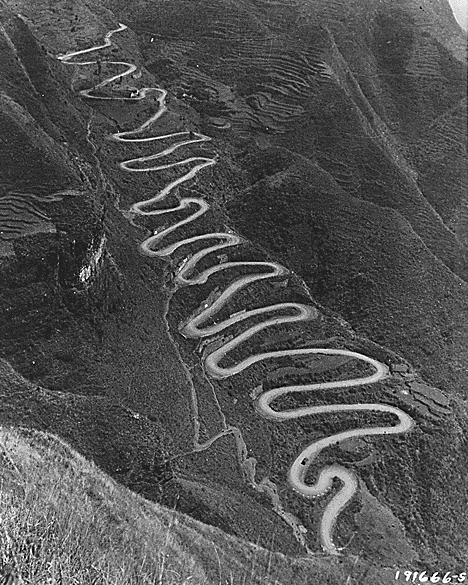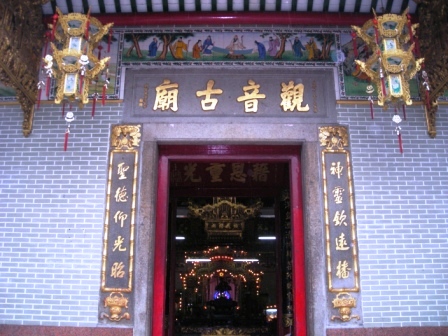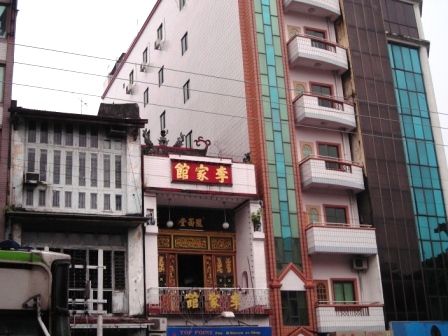 Overseas Chinese in Burma Overseas Chinese in Burma
(Myanmar)
 Sharing a 2171 km border with China, Burma or Myanmar has experienced a long history of Chinese migration and Chinese contact. Chinese presence and contact with Burmese reflected changes in technology, nature of economic system as well as political developments in both China and Burma. Sharing a 2171 km border with China, Burma or Myanmar has experienced a long history of Chinese migration and Chinese contact. Chinese presence and contact with Burmese reflected changes in technology, nature of economic system as well as political developments in both China and Burma.
The earliest Chinese arrived in Myanmar by road through Yunnan, 云南. But as the sea transport developed, Chinese traders from coastal provinces of Guangdong, 广东, and Fujian, 福建, traded with the Burmese via the sea route.
During the Ming dynasty,明朝, Burma was part of the South East Asian trading economy and Chinese junks arrived to trade and participated in the exchange of commodities throughout South East Asian economies.
After the fall of Ming dynasty in 1644, Burma saw the arrival of political refugees. The imperial princes of the fallen Ming dynasty had regrouped and used southern China as their base to try to restore the Ming dynasty. As this resistance movement collapse, the last of these Ming princes, Emperor Yongli of the Southern Ming dynasty, 南明永历皇帝, fled into Burma but was arrested and executed by the Qing forces in May 1662.
Although the Qing dynasty banned overseas travel several times, evidence suggested that Chinese merchants managed to continue the sea trade.
Colonialism arrived in Burma through three Anglo Burmese wars in 1824, 1853, and 1885. The British colonial rulers encouraged Chinese traders to settle in Yangon. Most of the Chinese migrants were Cantonese and Hokkien from Guangdong and Fujian province. As the migrants prospered and settled down, they established Clan Associations, 会馆, and temples to serve social and cultural needs of this growing overseas Chinese community. Many of these institutions such as the Kheng Hock Keong, 庆福宫 and Cantonese Guanyin Temple, 观音古庙continue to exist and to function in Yangon Chinatown.
Burma along with Penang, Malacca, and Singapore became major ports and trading centers in Southeast Asia. There were much movement of capital, resources, and people between these trading centers.
In the 1930s, the overseas Chinese in Burma like other overseas Chinese were concern with Japanese military expansion in China. When the Sino Japanese war erupted in 1937, overseas Chinese leaders from Burma participated in the Overseas Chinese conference held in Singapore and in 1938, helped founded the China Relief Fund.
One of Burma’s key roles during this period was its position as the starting point of the Burma Road, 滇缅公路,. When the Chinese seacoast was blocked by the Japanese, war and aid materials from UK, USA, France, Russia and China Relief Fund were sent to Yangon port. From Yangon, the resources were sent by rail to Lashio, the end of the railway line. The resources were transported via the Burma Road to Kunming, 昆明, in China.
After the Japanese surrender, the Communist and Nationalist began a Civil War in China. Meanwhile, Burma gained independence from Britain on 4 January 1948. By the following year, the Nationalist forces lost the Civil War in China and some of the defeated forces regrouped in Northern Myanmar in a futile attempt to resist Communist China. It took the Burmese considerable effort to neutralize the Nationalist forces.
In 1964, the Burmese government nationalized foreign assets severely affecting the Chinese population. Over the years, many Chinese left Burma for other countries.
Today, there is still a Chinese community in Burma and many of the temples and clan associations continue to function. The Yangon Chinatown has many businesses managed by Chinese families while Chinese entrepreneurs continue to be active in the various industries in Myanmar.
References:
Gernet, Jacques. (2006). A history of Chinese civilization. UK: Cambridge : Cambridge University Press.
Leo Suryadinata Ed. (2007). Chinese Diaspora since Admiral Zheng He with special reference to maritime Asia. Chinese Heritage Centre, Singapore 2007
Lynn Pan Ed. (2006). The encyclopedia of the Chinese overseas. Singapore: Editions Didier Millet
Lynn Struve. (2007). The Southern Ming 1644-1662. Shanghai Bookstore Publishing House
Related articles:

|

Signboards commemorating successful scholars
Longshan Tang, 龙山堂, Yangon

Signboards commemorating successful scholars
Longshan Tang, 龙山堂, Yangon

Kheng Hock Keong, 庆福宫

Clan association

Burma Road, 滇缅公路

Cantonese Guanyin temple

|

 Sharing a 2171 km border with China, Burma or Myanmar has experienced a long history of Chinese migration and Chinese contact. Chinese presence and contact with Burmese reflected changes in technology, nature of economic system as well as political developments in both China and Burma.
Sharing a 2171 km border with China, Burma or Myanmar has experienced a long history of Chinese migration and Chinese contact. Chinese presence and contact with Burmese reflected changes in technology, nature of economic system as well as political developments in both China and Burma. 





